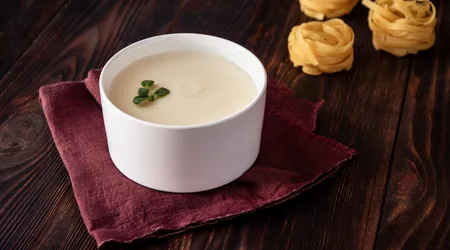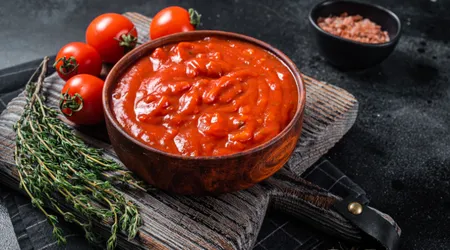How to prepare basic Italian sauces

The basic Italian sauces They are the cornerstone of traditional cuisine, the foundation that transforms simple dishes into masterpieces of taste.
Announcements
From north to south, these preparations tell stories of families, territories, and centuries of refinement. But what makes a sauce truly authentic?
It's not just about the ingredients, but about technique, patience, and a pinch of creativity.
In this article, we will explore how to prepare the basic Italian sauces with practical approaches, updated to 2025, and tips to elevate your dishes.
From classics to modern variations, each sauce is a journey of flavor. Prepare to discover secrets, techniques, and a little culinary magic: are you ready to bring the flavors of Italy to life?
Announcements
Italian cuisine is synonymous with simplicity that embraces complexity. basic Italian sauces they are not just condiments, but expressions of culture.
Think of ragù, which cooks slowly for hours, or béchamel, creamy and versatile.
According to a 2024 report by the Academy of Italian Cuisine, 78% of Italians consider sauces an essential element to define an “authentic” dish.
This data highlights the importance of mastering the basic Italian sauces.
In 2025, with the growing focus on sustainability, chefs are recommending local and organic ingredients to enhance flavors.
We'll start with the basics, then explore variations and tricks to make each sauce unique.
Bechamel: the queen of white sauces
Imagine a lasagna without bechamel: it would be like a painting without a frame. This velvety and enveloping sauce is essential to Italian cuisine.
Flour, butter, and milk blend together in perfect balance. Melt 50g of butter, add 50g of flour, and stir to form a golden roux.
Pour in 500 ml of hot milk, stirring to avoid lumps. Cook until smooth. A pinch of nutmeg is the finishing touch.
Bechamel sauce requires attention: too high a heat can ruin it.
Use whole milk for a rich texture, but in 2025 many chefs are experimenting with plant-based milks, such as almond milk, for lighter versions.
Avoid cold milk: it slows the cooking process and risks lumps. If the sauce is too thick, add milk gradually. Béchamel is versatile: perfect for gratins or baked dishes.
++ Essential tools in Italian cooking
A modern trick?
Replace the butter with extra virgin olive oil for a lighter, more Mediterranean version. This variation, popular in Liguria, adds a unique flavor.
Store the béchamel sauce in the refrigerator for up to two days, covered with cling film.
Reheat it over low heat, stirring constantly. Béchamel isn't just a sauce, it's a warm embrace for any dish.

Ragù: the taste of tradition
Ragù is the king of basic Italian sauces, a symbol of conviviality. Each region has its own version, but Bolognese ragù is iconic.
Sauté onion, carrot and celery, add minced meat (beef and pork) and deglaze with white wine.
Add the tomato and simmer for at least three hours. Patience is the key.
Don't rush the ragù: time develops deep flavors. Use San Marzano tomatoes for natural sweetness. In 2025, vegetarian ragùs with lentils or mushrooms are gaining popularity.
Stir frequently to prevent sticking. Add a tablespoon of milk to balance the tomato's acidity, as they do in Bologna.
See also: Basic bread making techniques
For a perfect ragù, choose cast iron pots: they distribute heat evenly. Avoid airtight lids: the steam must escape to concentrate the flavors.
It can be frozen for three months, making it ideal for quick lunches. Ragù isn't just a sauce, it's a story told with every spoonful.
Tomato sauce: the essence of Italy
Tomato sauce is the soul of Italian cuisine, simple yet extraordinary. Heat extra virgin olive oil, add garlic or onion, then fresh or peeled tomatoes.
Cook for 20-30 minutes, season with salt and basil. The quality of the tomatoes is crucial: choose local varieties, such as datterino.
Don't overdo the sauce with spices: the tomato should shine. In 2025, raw, uncooked sauces are trending to enhance freshness.
Avoid aluminum pans: they can alter the flavor. For a velvety texture, pass the sauce through a sieve. It's perfect for pasta, pizza, or bruschetta.
An original example?
Try a sauce with yellow cherry tomatoes and saffron for a sophisticated touch. Store it in sterilized jars for months.
Tomato sauce is like a canvas: simple, yet ready to transform with your creativity.
Pesto: the scent of Liguria
Genoese pesto is an explosion of freshness among the basic Italian saucesBlend fresh basil, garlic, pine nuts, Parmesan, pecorino, and extra virgin olive oil.
Use a mortar for authenticity: the blender heats the leaves, altering their flavor. Proportions? 50 g of basil for every 100 ml of oil.
Choose young basil and wash it gently. In 2025, arugula or cavolo nero pesto is a trendy option.
Don't overheat the pesto: add it to the pasta with the heat off. Store it in the refrigerator with a layer of oil on top for up to a week.
A creative idea?
Use walnuts instead of pine nuts for a more intense flavor. Pesto is ideal for gnocchi or salads. It's like a ray of Ligurian sunshine: vibrant, aromatic, and unforgettable.
Garlic, oil, and chili sauce: the magic of simplicity
This sauce proves that less is more. Heat extra virgin olive oil, add sliced garlic and fresh chili pepper. Cook briefly, making sure the garlic doesn't burn.
Pour over the pasta al dente. The key? Quality oil and precise timing.
Don't skimp on the oil: it's the heart of the sauce. In 2025, local chili peppers, such as the Calabrian variety, are preferred for their authenticity.
Use fresh garlic, never garlic powder. You can also add chopped parsley. It's ready in five minutes, perfect for impromptu dinners.
Try adding lemon zest for a modern twist.
This sauce is an analogy for life: few ingredients, but when well orchestrated, they create magic. Can I store it? Best enjoyed fresh, just made.
Techniques and tools for perfect sauces

The basic Italian sauces They require suitable tools. Stainless steel or cast iron pans are ideal for long cooking times. Use wooden spoons for stirring: they don't alter the flavors.
An immersion blender is useful for smooth textures. In 2025, digital scales ensure accuracy.
Don't underestimate the temperature: every sauce has its own rhythm. For example, ragù prefers low heat, pesto prefers coolness.
Invest in a good knife for fine chopping. Maintenance? Clean pots and pans immediately to avoid residue.
Any advice?
Keep a recipe notebook to jot down your own variations. It's like building a flavor archive. With practice and care, each sauce becomes a work of art.
| Sauce | Main ingredients | Preparation time | Conservation |
|---|---|---|---|
| Bechamel sauce | Butter, flour, milk | 15 minutes | 2 days in the fridge |
| Ragù | Meat, tomato, wine | 3-4 hours | 3 months in the freezer |
| Tomato | Tomatoes, oil, basil | 30 minutes | 6 months in a jar |
| Pesto | Basil, pine nuts, oil | 10 minutes | 1 week in the fridge |
| Garlic and oil | Oil, garlic, chili pepper | 5 minutes | Consume fresh |
Conclusion: the power of Italian sauces
The basic Italian sauces They're more than just a condiment: they're the beating heart of Italian cuisine. From creamy béchamel to enveloping ragù, every sauce embodies tradition and innovation.
In 2025, the trend is clear: sustainable ingredients and modern techniques blend to create authentic flavors.
Whether you're a beginner or an expert, mastering these sauces allows you to transform every dish into a unique experience. What's your favorite sauce?
Experiment, dare, and let the flavors tell your story. Italian cuisine is an art, and sauces are your paintbrush.
Frequently Asked Questions
1. Can I use canned tomatoes for tomato sauce?
Yes, choose quality peeled tomatoes, such as San Marzano, for an authentic flavor. Make sure they don't contain additives.
2. How to avoid lumps in béchamel sauce?
Slowly pour in the hot milk and whisk. If lumps form, strain the sauce through a sieve.
3. Can pesto be frozen?
Yes, portion it into small containers and cover with oil. It will last up to six months in the freezer.
4. Which oil is best for sauces?
Italian extra virgin olive oil, preferably of regional origin, enhances flavors without overpowering them.
5. How long does an authentic ragù cook?
At least three hours on low heat, but some chefs recommend up to six for more intense flavors.
